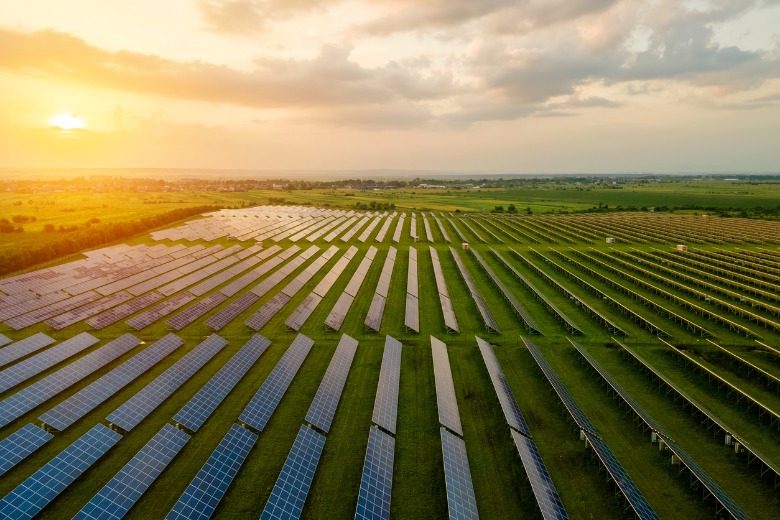
Power generation from Australia’s solar farms, including the Sun Cable mega farm proposed for the NT, is like to be impacted by climate change, according to a new study by researchers from UNSW.

The research published in the journal Solar Energy this month, is the first to quantify the impact of climate change on solar reliability in Australia over the next century.
It concludes that with the integration of solar PV plants into the electricity grid, climate-related variability will put the power distribution system at increased risk of uncertainty.
The report warns that variable outputs can not only cause an imbalance between electricity supply and demand, but also lead to voltage fluctuations and blackouts.
“As the installation capacity of PV increases in the future, managing solar power fluctuations will be an escalating problem globally,” the researchers report.
Assessing the impact of climate
Report author, Associate Professor Merlinde Kay from the UNSW School of Photovoltaic and Renewable Energy Engineering, says the modelling underscores the need to assess the impact of climate change before building large scale solar farms to ensure future risks are minimised.
“You’re wanting something that will be reliable so you’re not seeing a lot of fluctuations in terms of power or voltage in your grid,” she told Government News.
“One of the things that we were really interested in was looking at different climate change scenarios – specifically we looked at a higher emissions scenario – and how this impacts where you would have large scale photovoltaics.
“Because you’re looking at long term investment you want to know if it’s economically viable; how is it going to change the amount of power output that’s going to be generated and the impact on the grid?”
For example, increasing temperatures under a high emissions scenario can make solar panels less efficient, while ‘lulls’ in the availability of extractable solar energy can lead to instability.
World’s biggest farm planned in NT
The study considered two Australian solar farm projects in the NT and the New England region of NSW.
Sun Cable is developing the the world’s largest proposed solar farm near the town of Elliott in the NT’s Barkly region, which will have a generation capacity of at least 14 gigawatts, and plans to supply electricity to Darwin and Singapore.
The results highlight the requirement for storage facilities at the Sun Cable site to deal with intermittency and power curtailment issues in the future.
‘Changes in solar resource intermittency and reliability under Australia’s future warmer climate’, Journal of Solar Energy
But modeling suggests it could lose about 280 megawatts of total generation by the end of the century as a result of a two per cent reduction in radiation.
The research also predicts reduced periods of extractable solar power for the Sun Cable farm, which points to shorter periods of reliable output and high variation in power generation through the day.
“This can cause severe grid instability issues and impact the supply–demand ratio during the day.
“The results highlight the requirement for storage facilities at the Sun Cable site to deal with intermittency and power curtailment issues in the future.”
Favourable conditions for New England
The outlook for the New England solar farm, currently under construction near Ullara, is better, with “highly favorable conditions in the future to generate optimum PV power.”
The New England farm, which is the second largest in Australia and is expected to generate 720 MW of electricity, will benefit from a projected increase in radiation.
“This indicates a net increase in the long-term power generation capacity of the site in future,” the report says.
“Due to climate change, the New England solar farm is estimated to have a surplus of up to 1.6 MW of energy generation capacity by the end of the century.”
Nationwide outlook
The study says it’s expected that variability in solar resources will decrease in the future ‘almost throughout the continent’, indicating good conditions for solar energy extraction in the future.
“Results reveal that Eastern Australia shall experience an increase in solar resource availability and episode length in the future, ensuring a more stable and reliable future energy output.
“This region is predicted to experience a reduction in the lulls and frequency of intermittent and overcast days in the future, highlighting reduced future intermittency.”
However some regions in WA could be headed for increased issues around intermittency of supply.
“Hence it is highly recommended to implement energy storage options to ensure grid stability in these regions,” the authors say.
Professor Kay says despite the findings solar power remains a good source of renewable energy and generally, solar farms are being built in the right places.
“What we need ot think about moving forward is that with most site assessments we’ve generally looked to the past,” she says.
“I think we need to be looking more towards climate models rather than historical data.
“You want to be making sure that besides looking at generation, supply and demand, and regional population growth, you can also ensure (the wind farm) is economically viable into the future, and ensures a stable grid.”
Comment below to have your say on this story.
If you have a news story or tip-off, get in touch at editorial@governmentnews.com.au.
Sign up to the Government News newsletter
I thought climate change was going to lead to drought, which should mean more sun?? These guys make it up as they go along and will blame everything on climate change. Renewables have always been unreliable and problematic and it has nothing to do with climate.